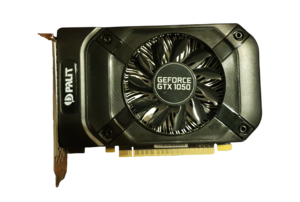Graphics processing unit
A Graphics Processing Unit (GPU) is a specialized electronic circuit designed to accelerate the rendering of images and videos on a display device, primarily a computer monitor or screen. It is an integral component of modern computing systems, contributing significantly to graphics rendering, parallel processing, and computational tasks.
Overview
Purpose
The primary purpose of a GPU is to handle and accelerate the complex mathematical calculations required for rendering images and videos. Unlike a Central Processing Unit (CPU), which is designed for general-purpose computing, a GPU excels in parallel processing tasks, making it well-suited for graphics-related computations.
Parallel Processing
A distinguishing feature of GPUs is their ability to perform parallel processing, where multiple tasks are executed simultaneously. This is particularly beneficial for graphics rendering, as rendering involves processing a large number of pixels and vertices concurrently.
Architecture
Streaming Processors
Modern GPUs consist of multiple streaming processors (also known as CUDA cores in Nvidia GPUs and Stream Processors in AMD GPUs). These processors work in parallel to perform calculations, enabling the GPU to handle complex graphics computations efficiently.
Memory
GPUs have dedicated video memory (VRAM) used for storing textures, frame buffers, and other graphics-related data. High-bandwidth memory (HBM) and Graphics Double Data Rate (GDDR) are common types of memory used in GPUs.
Graphics APIs
Graphics APIs (Application Programming Interfaces) like DirectX and OpenGL serve as communication interfaces between software applications and the GPU. These APIs allow developers to leverage the capabilities of the GPU for graphics rendering.
Applications
Gaming
GPUs play a crucial role in gaming, rendering realistic 3D graphics and providing smooth gameplay experiences. High-end GPUs are sought after by gamers for their ability to deliver high frame rates and detailed graphics.
Professional Graphics
In professional settings such as graphic design, video editing, and 3D modelling, GPUs accelerate rendering processes, enhancing productivity and reducing the time required for complex computations.
Scientific and Computational Tasks
GPUs are increasingly used for scientific research and computational tasks. Their parallel processing capabilities make them well-suited for applications like simulations, data analysis, and artificial intelligence.
Evolution
Graphics Accelerators
Early GPUs were often referred to as graphics accelerators. These dedicated graphics cards were separate from the motherboard and provided enhanced graphics capabilities compared to integrated graphics solutions.
Integrated Graphics
Modern CPUs often include integrated graphics, providing basic graphical capabilities. While suitable for everyday tasks, dedicated GPUs are preferred for demanding graphics applications and gaming.
Ray Tracing
Recent advancements include ray tracing technology, which simulates the behaviour of light to create more realistic lighting and reflections in graphics. Ray tracing is computationally intensive and benefits from the parallel processing power of GPUs.
Manufacturers
Leading manufacturers of GPUs include Nvidia, AMD, and Intel. These companies produce a range of GPUs catering to different market segments, from gaming enthusiasts to professionals in various industries.
Future Trends
The future of GPUs involves continued advancements in parallel processing, memory technologies, and efficiency. Emerging technologies such as real-time ray tracing and AI-based enhancements are expected to further elevate graphics capabilities.

